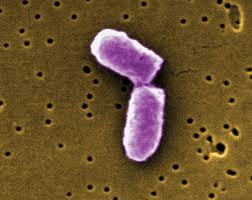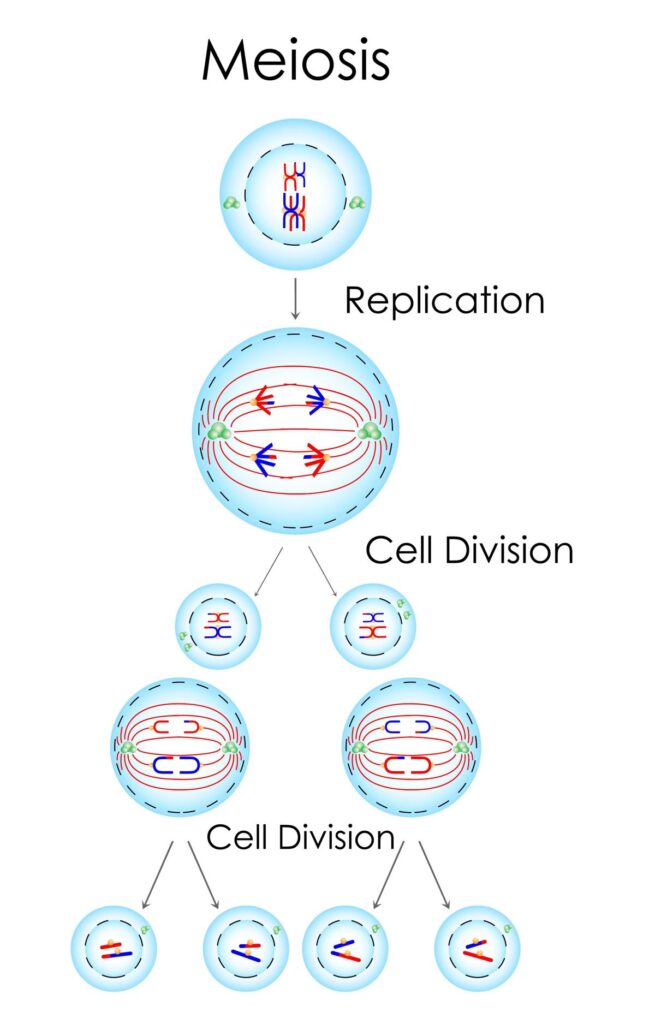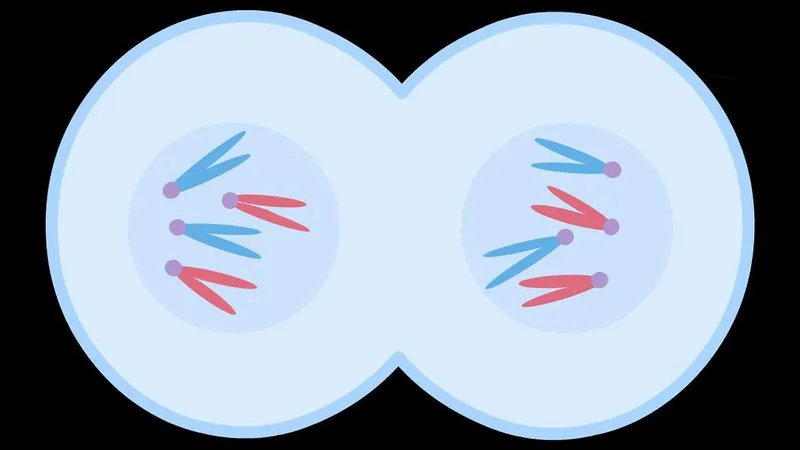Binary Fission

Certain protists and bacteria that are single-celled creatures use asexual reproduction called binary fission. One parent cell divides into two identical daughter cells; it is a simple process.
Single-celled organisms such as bacteria and certain protists use an asexual reproduction mechanism called B. fission. The division of a single parent cell into two identical daughter cells is a straightforward procedure.
Table of Contents
Steps of B. Fission
DNA Replication
The genetic material is duplicated twice, exactly by the circular DNA molecule.
Cell Division

As new components for the cell wall and plasma membrane are created, the cell grows.
DNA Division
The two DNA molecules adhere to the cell membrane in distinct places.
The DNA molecules are pulled apart when the cell elongates.
Cytokinesis

Often with the aid of a protein ring (such as FtsZ in bacteria), the cell membrane contracts inward.
Two distinct, identical cells are produced when the cell wall develops in the space between the two DNA molecules.
Binary Fission Types
Simple B. Fission
typical among bacteria.
The cell splits into two without undergoing a notable morphological alteration.
Binary transverse fission
Transverse axis division is prevalent in several protozoa, such as Paramecium.
Prolonged B. Fission
As in the case of flagellates like Euglena, division takes place along the longitudinal axis.
Fission via Oblique Binary
An oblique angle is where division happens (seen in certain amoeboid protozoans).
Examples of Organisms Using B. Fission
- Bacteria
- Archaea
- Protozoa
- Algae
Binary Fission vs. Mitosis
Although two identical daughter cells are produced during both B. fission and mitosis, there are important distinctions between the two processes
| Feature | Binary Fission | Mitosis |
|---|---|---|
| Occurrence | Prokaryotes (bacteria and archaea) | Eukaryotes (plants, animals, fungi, protists) |
| Complexity | Simpler and faster | More complex and slower |
| DNA Structure | Circular DNA, no nucleus | Linear DNA within a nucleus |
| Stages | DNA replication, cell elongation, division | Prophase, Metaphase, Anaphase, Telophase, Cytokinesis |
| Organelles Involved | No mitotic spindle, few organelles involved | Involves mitotic spindle, many organelles involved |
| Cytokinesis Mechanism | Inward constriction of the plasma membrane | Formation of a cleavage furrow (animals) or cell plate (plants) |
Steps of Binary Fission
Binary fission is a straightforward yet highly efficient process of asexual reproduction employed by prokaryotic organisms such as bacteria and archaea. It involves the replication of the organism’s DNA and the division of the cell into two genetically identical daughter cells. Here are the detailed steps of binary fission:
DNA Replication
- Initiation:
- The process begins at a specific location on the DNA called the origin of replication.
- Enzymes involved in DNA replication are assembled at this origin.
- Elongation:
- The circular DNA molecule is copied bidirectionally.
- This ensures that each daughter cell will receive an exact copy of the DNA.
Cell Growth
- As DNA replication continues, the cell begins to grow and elongate.
- The replicated DNA molecules move towards opposite poles of the cell.
- The growth of the cell ensures that there is enough cytoplasmic material to be divided between the two new cells.
Segregation of DNA
- The cell’s cytoskeletal elements help in moving the DNA copies to opposite ends of the cell.
- The cell membrane starts to pinch inwards at the center, beginning the process of dividing the cell into two halves.
Cytokinesis
- The inward pinching of the cell membrane continues until it meets in the center, effectively splitting the cell into two separate entities.
- The cell wall, if present, also forms to separate the two new daughter cells completely.
- The result is two genetically identical daughter cells, each with a complete copy of the original DNA.
Frequently Asked Questions(FAQ)
What is Binary Fission ?
Certain protists and bacteria that are single-celled creatures use asexual reproduction called binary fission. One parent cell divides into two identical daughter cells; it is a simple process.
List the steps of B. Fission?
The steps of B. Fission are
DNA Replication
Cell Division
DNA Division
Cytokinesis
What is Cell Division ?
As new components for the cell wall and plasma membrane are created, the cell grows.
Related Articles




